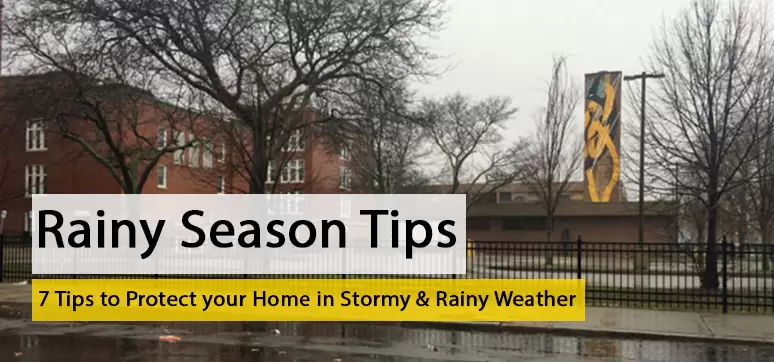House window protection from rain is paramount nowadays due to rapid climate change, which is bringing stormy and rainy weather more frequently to us. The howling winds and extreme weather sometimes cause serious damage to the property. Bracing your home against bad weather is possible with a spectrum of modern technologies like roof clips, etc. Even the right home insurance can aid with the financial cost in case of damage. However, the emotional impact of strong storms and rain is hard to overcome. Severe weather causes destruction and is sometimes unpredictable. Hence, homeowners can take preventative steps to reduce damage if a severe storm or rainy weather hits.
Post your Requirement
A Few Tips To Protect Windows From Rain:
-
Guard Windows and Doors:
Seal all the entry points, such as windows and doors, to prevent water or wind from entering them. Windows and doors are the vulnerable and weakest parts of the house during a heavy storm or rain. Wind funnelling through them pushes in an upward direction and could damage or lift the roof, which causes further house damage.
Hence, it is best to seal these areas with storm shutters. Repair broken windows or replace them with impact-resistant windows. If you do not want to invest in costly storm shutters, inexpensive plywood can also hold up against the force winds of a storm and heavy rain. Close all the doors when there is harsh weather, as flying debris can hit and cause damage.
-
Remove Outdoor Items:
Clear away gardening tools, lawn furniture, or sporting outdoor equipment when a turbulent storm is approaching. Strong winds during heavy rain or storms can pick up the outdoor items potentially and throw them flying into your home through the entry points.
-
Trim The Trees:
It is always best to trim the trees surrounding your house as storms snap away large branches of trees. These can cause severe damage to your car, roof, windows, power lines, etc. Sawing the loose tree branches can potentially protect your car and house. Do not leave loose vegetation in your yard when the storm is approaching, as it can be dangerous.
-
Floodproof Your House:
Heavy rain can cause flooding, and water damage can cause havoc. It devalues your house and poses a threat to the house’s foundation. You can dry flood-proof your house by making your house foundation watertight using some concrete. This way, you can prevent water from entering the house or its foundation. Another option is wet flood-proofing your house, which allows floodwater to enter and exit through a crawlspace or basement.
-
Safeguard The Roof:
As the roof is the most exposed part of a house, it needs to be properly secured during heavy rain and storms, so parts of it do not harm the house windows. Complete your roof work before the rainy and stormy season to withstand severe weather. Do not forget to apply seals around the chimney and vent pipes.
-
Be Safe With Electric Supply:
During storm rain, store all your electric appliances properly where flood or rainwater is unlikely to reach them. Cover all your sockets and turn them off in case of heavy rain and storm. Before the bad weather hits, make sure you have arrangements for standby power.
-
Review Your Insurance Policies:
The first and foremost thing you need to do is look over your insurance policies. This will help to make sure that you and your property are covered for any losses incurred due to bad weather, a natural disaster, heavy rain, or a storm.
The majority of the policies do not cover the damage caused by rain, hurricanes, and strong storms. However, such a policy can be separately purchased with the homeowner’s policy. Always keep such important documentation away from the house in any safe place. These documents will be asked by the insurance company if any damage to the house occurs due to bad weather.
As nobody can control severe weather, it is best to take some preventive steps to keep your home and loved ones safe.

























Post A Comment